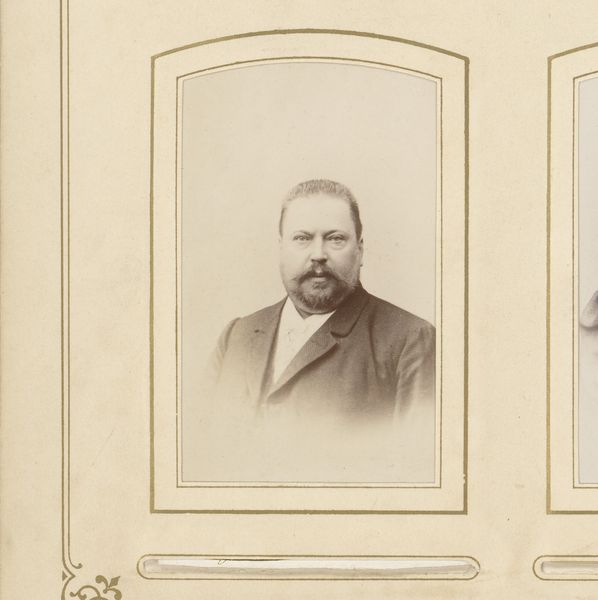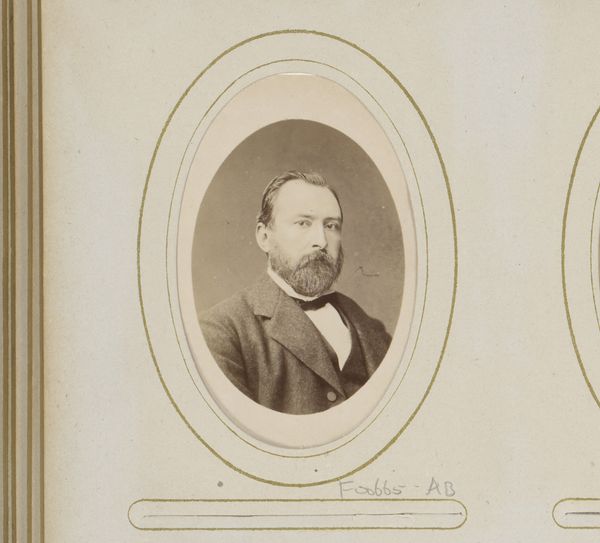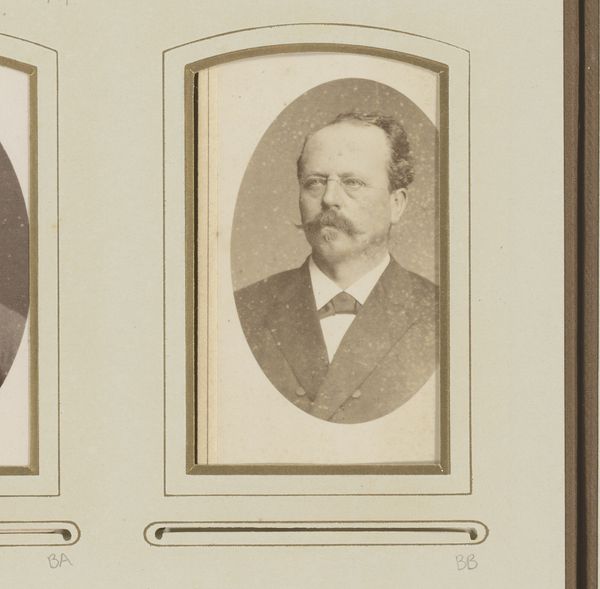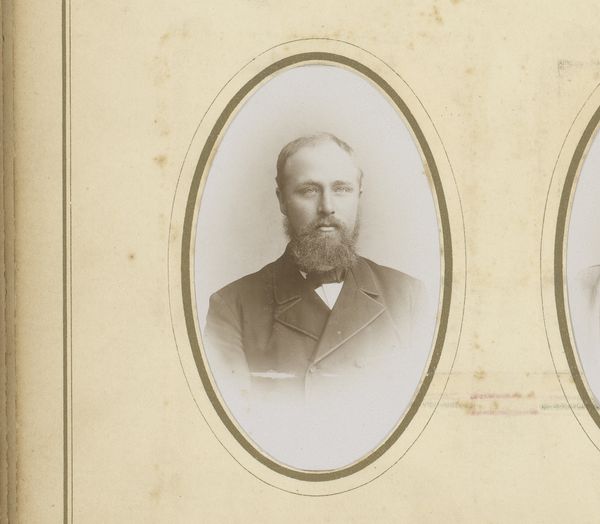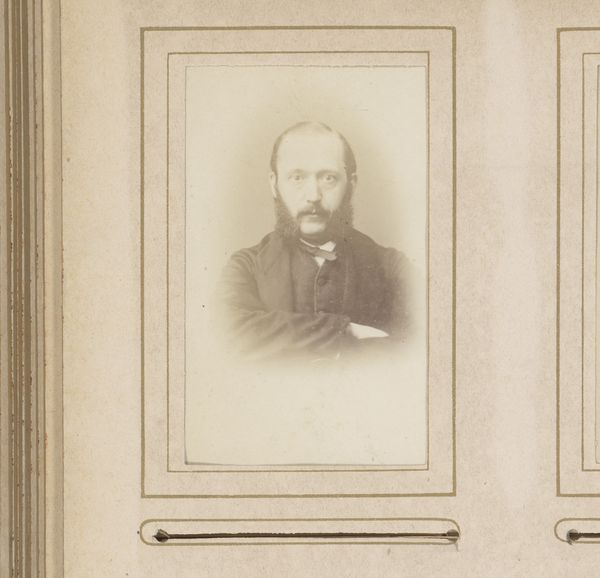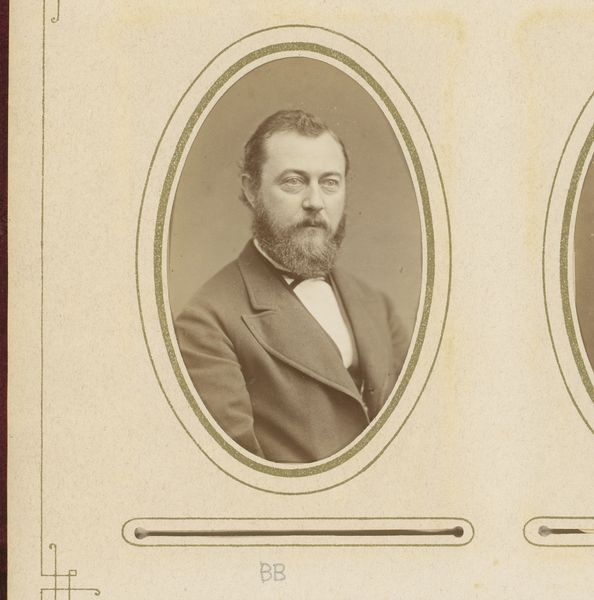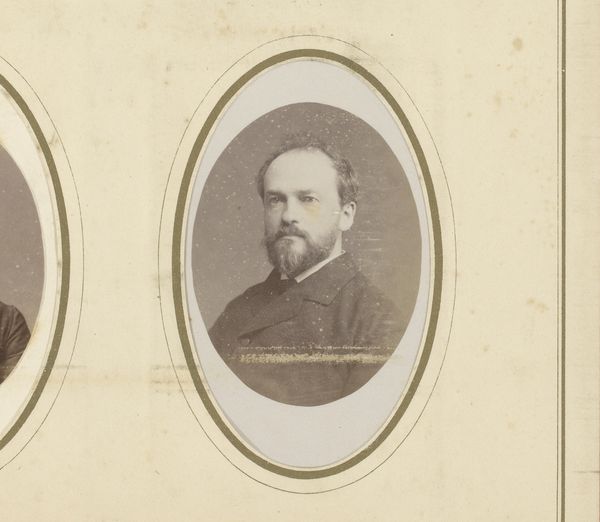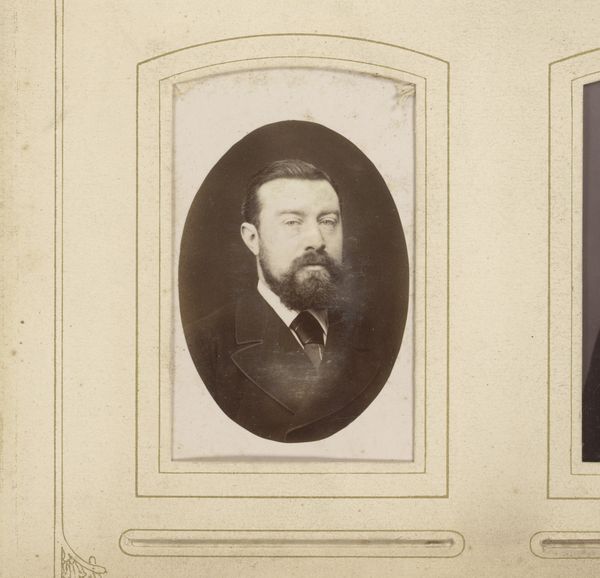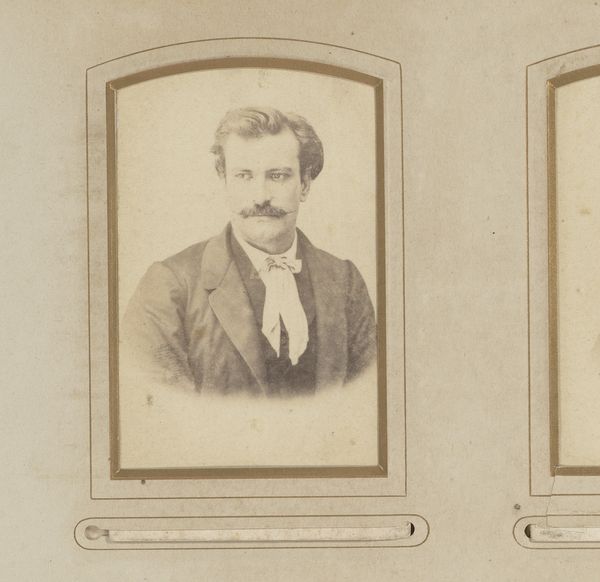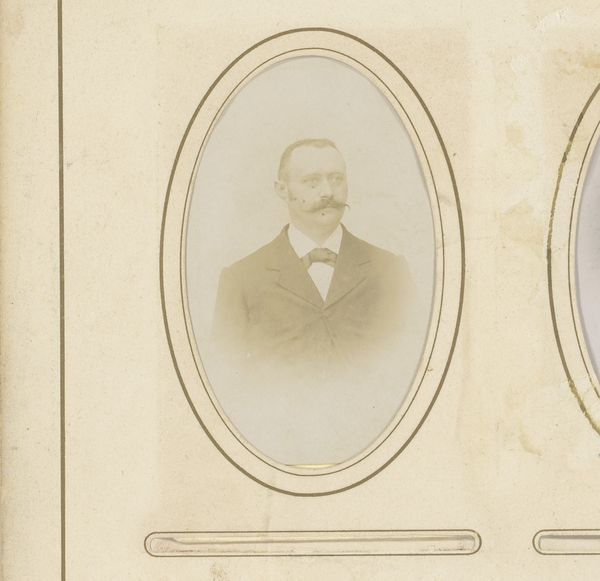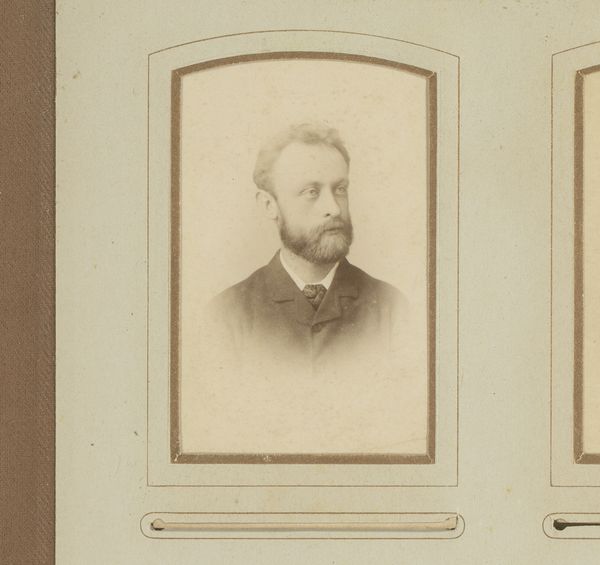
daguerreotype, photography
#
portrait
#
daguerreotype
#
photography
#
historical photography
#
realism
Dimensions: height 85 mm, width 51 mm
Copyright: Rijks Museum: Open Domain
Curator: Looking at this portrait, I feel immediately grounded. There’s a stoicism and seriousness that draws me in. Editor: Indeed. What strikes me about this daguerreotype, entitled "Portret van een man met baard," which we date sometime between 1850 and 1900 and is attributed to F.E. Perger, is how it captures a sense of burgeoning industrial-age society, the rise of a solid middle class wanting their visages recorded for posterity. Curator: I agree. A figure of stability. Notice how his gaze, though perhaps naturally captured, is directed slightly away, giving an impression that this man knows something. The beard itself— a symbol of virility, wisdom. Think of how portraiture was then almost exclusively for the elite, for leaders. To see it capturing a more ‘ordinary’ person indicates a changing symbolic landscape. Editor: Yes, the rise of photography democratized portraiture, enabling broader social strata to participate in image-making. Photography had huge influence in social and cultural terms, it was not simply reflective but formative in many ways. It encouraged a broader reflection on self and family as subjects worth representation. It's easy to forget how revolutionary the ability to reproduce likeness was. Curator: And the framing in this picture plays a key part, adding another layer of information. Notice the oval shape of the photograph and then the larger almost picture frame. It echoes traditions that can be traced back through iconic, often religious, images—further cementing the idea that the photographic image has intrinsic and sustained importance. Editor: Certainly, these early photographs carry a strong visual connection with earlier painted portraits, it would make the genre both familiar and aspirational for a wider audience, encouraging photographic portraiture to become almost mandatory as an index of belonging and success. We might not read this the same way without knowing that context. Curator: It offers us a glimpse into the symbols people chose to associate with themselves, the cultural narratives they wanted to uphold and perpetuate. In a very simple, visually appealing format. Editor: It reminds us that photography is as much a social practice as it is an artistic one, shaping how we see ourselves and others. Curator: Indeed, this image is more than meets the eye—it invites a profound dialogue between the subject, its representation, and the shifting cultural tides of its time. Editor: I couldn't agree more, highlighting the crucial intersection of technological advancements and societal evolution that underpin the birth of modern visual culture.
Comments
No comments
Be the first to comment and join the conversation on the ultimate creative platform.
